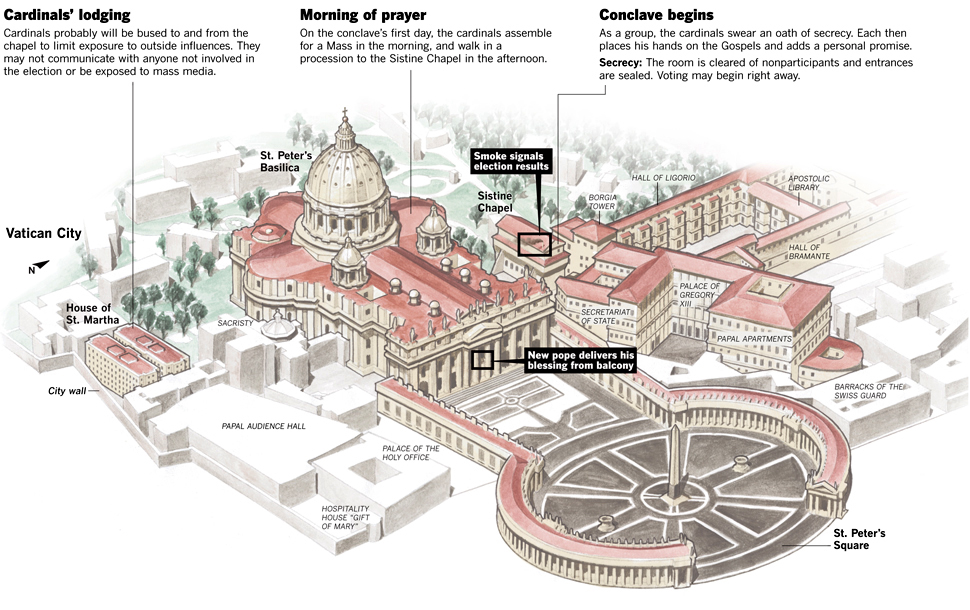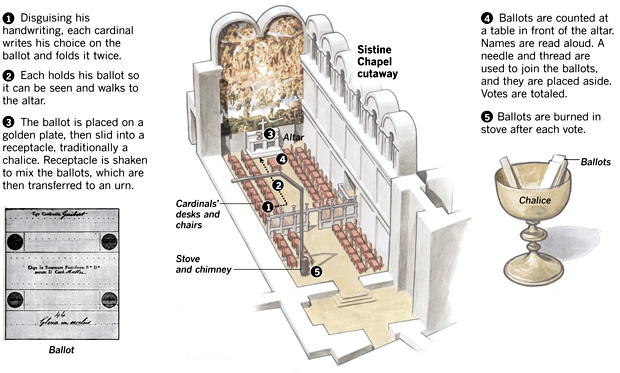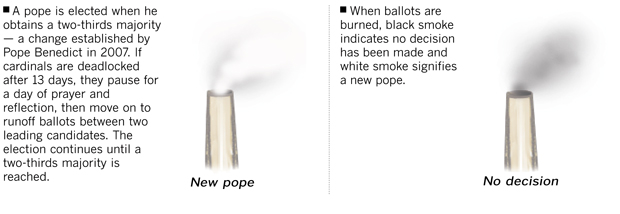Graphic
Selecting a pontiff
The election of a pope is a centuries-old process that was last updated in 2007 by Pope Benedict. Since 1271, the church’s highest-ranking clerics, the cardinals, have voted in a conclave which was instituted as the result of the longest papal vacancy in history — two years and nine months.

The voting process
Voting results
The new pope
The College of Cardinals
Who can be pope?
|
• Chooses the name by which he will be known. |
• Goes to a small red room near the chapel. He dresses in the papal vestments, white skull cap and soutane, which have been prepared in various sizes. |
• Proceeds to the main balcony of the Vatican, where the senior cardinal deacon declares, “Habemus papam!” (We have a pope). Pope delivers his first papal blessing. |







